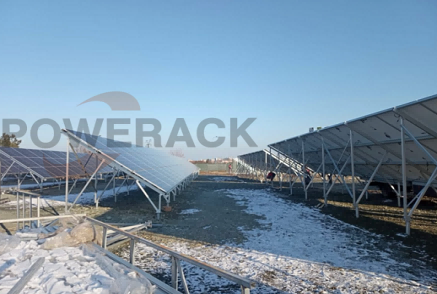Solar photovoltaic systems are renewable energy systems used to generate and supply electricity. As the global demand for clean energy increases, solar photovoltaic systems are becoming more widely used. However, the performance of these systems may be affected when encountering severe weather such as heavy snowfall. In this article, we will discuss in detail the effects of heavy snowfall on solar PV systems and possible solutions.
Snow cover affects PV panels in two main ways. First, snow cover blocks the sunlight from reaching the PV panels, thereby reducing the amount of electricity generated by the PV system. Due to the low light intensity in snowy weather, the PV panels are unable to obtain enough solar energy to generate the desired power output. Especially when the snow thickness is high, the PV panels may even be completely covered and unable to receive sufficient solar radiation. Second, snow cover may also cause the temperature of the PV panels to drop. When the sun's rays cannot penetrate through the snow to the PV panels, the panels lose their source of heat and their temperature drops. Lower temperatures can reduce the efficiency of the PV system and affect its ability to function properly.Heavy snowfall not only affects the power generation and temperature of a solar PV system, but may also increase the risk of system safety. First, under snow cover, the wires and connecting parts of the system are susceptible to pressure and tension, increasing the risk of broken solar cables or dislodged modules. Second, freezing issues can lead to solar modules damage or failure, such as ice on the surface of PV panels that can lead to glass breakage or cell damage.
In addition, after heavy snowfall in winter, large-scale snowmelt may pose a risk of water damage to the PV system. If the system is installed in an inappropriate location or with poor drainage, the accumulated large amounts of snowmelt water may seep into the interior of cables, junction boxes and other components, leading to short circuits or moisture in the equipment, and thus affecting the normal operation of the system.
Therefore, snow removal is the key to restoring the power generation efficiency of your solar PV system during heavy snowfall. It is important to regularly inspect and clear snow from the surface of the PV panels. Brushes or soft tools can be used to gently clear snow from the surface of the PV panels to ensure that the panels are exposed to sunlight for maximum solar energy absorption. In addition to removing snow, an effective way to minimize the effects of snow cover is to use special surface coatings. These coatings typically have low surface energy, anti-adhesive and anti-freezing properties that can help prevent snow from adhering and promote natural sliding off. In this way, the PV panels can continue to receive sunlight and maintain high power generation efficiency, even if some snow remains.In addition, when installing a PV system, consider choosing the proper mounting angle and solar mounting kits to minimize the impact of snow cover on the PV panels. The proper mounting angle helps the snow to slide off quickly and reduces the amount of time it stays on the PV panels.
In summary, heavy snowfall can have multiple effects on solar PV systems. By clearing snow, paying attention to system safety, and performing regular inspections and maintenance, we can minimize these effects and ensure that solar PV systems operate properly during heavy winter snowfalls.